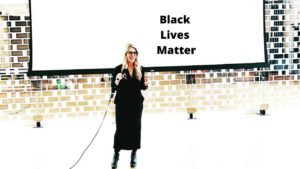Do you regularly screen for depression in the older adults you work with? Do you know which screening tools are best to use with older adults? With adults with mild cognitive impairment? With adults with moderate to severe dementia?
No worries! I got you covered.
In this week’s video, you’ll learn:
⭐️ 5 must have (and free) depression screening tools to use with older adults
⭐️ the screening tools to assess for depression and anxiety when older adults are medically hospitalized
⭐️ Which depression screening tools are best for use with older adults who have mild cognitive impairment or early stages of dementia
⭐️ A screening tool to identify depression in the moderate to severe stages of dementia.
Would You rather watch the video? Click here
Which screening tools are used to assess depression in older adults?
There are several screening tools that are commonly used for assessing for depression in older adults. The Geriatric Depression Scale (GDS), the Patient Health Questionnaire (PHQ-9), the Depression in Old Age Scale (DIA-S), the Hospital Anxiety and Depression Scale (HADS), and for people with dementia, and the Cornell Scale for Depression in Dementia (CSDD).
The Geriatric Depression Scale (GDS) – A Depression Screening Tool for Older Adults
The Geriatric Depression Scale (GDS), first created by Yesavage, et al. in 1983 has been tested and used extensively with older adults. The GDS Long Form is a 30-item questionnaire in which participants are asked to respond by answering yes or no regarding how they have felt over the past week. Questions from the GDS-30, which had the highest correlation with depressive symptoms in validation studies were selected for the short version. A Short Form GDS consisting of 15 questions was developed in 1986 and is commonly called the GDS-15. For example:
- Are you basically satisfied with your life?
- Are you afraid that something bad is going to happen to you?
- Do you prefer to stay at home, rather than going out and doing things?
The GDS-15 is easy to use with older adults with or without cognitive concerns. Since the questions are simple “yes or no” questions, I find it useful to use with people with cognitive disorders. It takes about 5 to 7 minutes to complete.
For the GDS-15, a score of 0 to 5 is normal. A score greater than 5 suggests depression, and the older adult should be referred to a mental health provider for a more comprehensive assessment of depression.
The GDS-15 is my “go to” screener recommendation in outpatient primary care and outpatient mental health care settings.
The GDS-15 is available in many different languages from Arabic to Vietnamese. Learn more and download the GDS-15 here.
Patient Health Questionnaire (PHQ-9)
It’s also important to note that the PHQ-9, which many medical and mental health providers use to screen for depression, is also okay to use with older adults. The PHQ-9 uses a likert scale (“not at all” to “nearly every day”) to rate how frequently a person has been experiencing symptoms. Because of this, I do NOT recommend using the PHQ-9 with adults with cognitive disorders or dementia, rather the GDS-15 (above), or the Cornell Scale for Depression in Dementia (CSDD) are best to use for mild to moderate and severe dementia. Grab your copy of the PHQ-9 here.
Depression in Old Age Scale (DIA-S)- A Depression Screening Tool for Medically Ill or Medically Hospitalized Older Adults
The Depression in Old Age Scale (DIA-S) is a new screening tool for depression in older adults, was designed for use with medically ill or medically hospitalized older adults. This screening tool consists of ten short statements about depression with a simple yes/no answer format. For example:
- I am feeling down.
- I can enjoy my life, even when things are sometimes more difficult.
- I tend to worry a lot.
For the DIA-S, a score of 0 to 2 is normal. A score greater than 3 suggests depression, and the older adult should be referred to a mental health provider for a more comprehensive assessment of depression. Learn more about the DIA-S here
Hospital Anxiety and Depression Scale (HADS)
The Hospital Anxiety and Depression Scale (HADS), which was created in 1983 by Zigmond and Snaith to measure anxiety and depression with people who are medically hospitalized. It has since become a popular tool for screening for anxiety and depression within medical inpatient populations. You can learn more here.
Cornell Scale for Depression in Dementia (CSDD) – A Depression Screening Tool for Adults with Moderate to Severe Dementia
Cornell Scale for Depression in Dementia (CSDD) is a 19-item screening tool for detecting depression in adults with moderate to severe dementia. This assessment tool takes about 30 minutes and is administered in two steps:
- The clinician first interviews the resident’s caregiver on each of the 19 items of the scale based on their observations of the person with dementia’s behavior during the past week.
- The clinician briefly interviews the person with dementia
The screening assessment is broken up into categories, including:
- Mood-related signs like sadness, anxiety, irritability
- Behavioral disturbance like restlessness or stillness
- Physical signs like loss of appetite, loss of energy, etc.
- Cyclical functions like changes in sleep and wake times
- Ideational disturbance, meaning disturbance in thinking like suicidal thoughts, low self-esteem, increased delusions.
Learn more about the Cornell Scale for Depression in Dementia (CSDD) here.
Click here to learn more about screening for depression






